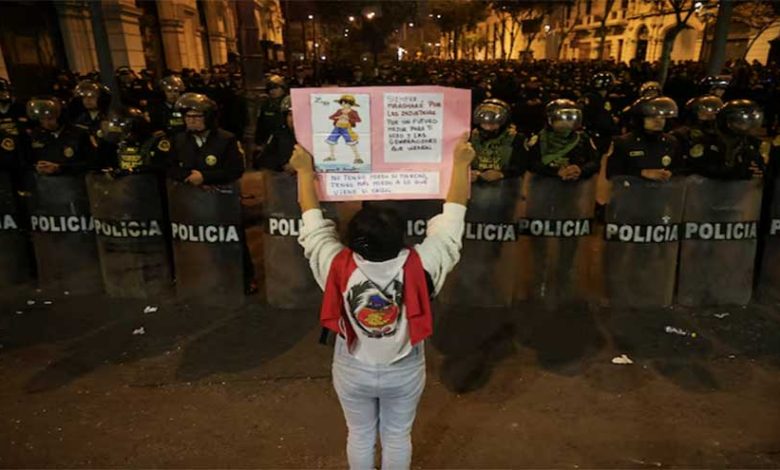Generation Z in Peru protests against President Boluarte for corruption and pensions.

A week after protests in the capital resulted in skirmishes with police, injuring over a dozen demonstrators, journalists, and police officers, Peruvian youth are mobilizing for another wave of protests against President Dina Boluarte on Saturday.
In addition to being stoked by long-standing resentment toward Boluarte and Congress, the protests began on September 20 in response to changes made to the nation’s pension system that mandated all Peruvians over the age of 18 join a pension provider.
“There’s been a low, simmering level of discontent in Peru and it’s been that way for actually quite some time,” said Jo-Marie Burt, a visiting professor in the Latin American studies program at Princeton University who has spent decades studying Peruvian politics.
According to Burt, the unhappiness has been stoked by economic instability, corruption scandals, an increase in crime, and resentment over the lack of accountability for the dozens of demonstrators killed by security forces when Boluarte took over in late 2022 following the removal and arrest of former President Pedro Castillo.
According to the July assessment from the Institute of Peruvian Studies, Congress has a 3% approval rating while Boluarte has a 2.5% rating.
Protests have rocked the nation’s mining industry in addition to the turmoil in Lima. In light of the current instability, Hudbay Minerals announced on Tuesday that it has temporarily closed its mill in Peru. Peru is a significant producer of gold and silver and the third-largest producer of copper in the world.
The youth of Peru take to the streets.
Youth protests in Nepal and Indonesia are followed by Gen Z protests in Peru. A skull in a straw hat, a motif from the Japanese manga “One Piece” about pirates who quest for riches, has frequently appeared in the protests.
One of the demonstrators in Lima who is embracing the sign is Leonardo Munoz.
“The main character, Luffy, travels from town to town freeing people from tyrannical, corrupt rulers in towns of slaves,” added Munoz. “It symbolizes the events occurring in different nations. That’s what’s going on in Peru right now.
27% of Peruvians are between the ages of 18 and 29, according to the country’s INE statistics agency.
“We’ve had enough of this becoming the norm. “When did we normalize death, corruption, and extortion?” was the statement made by student demonstrator Santiago Zapata.
“My generation is coming out to protest now because we’re tired of being silenced, made to feel afraid when the government we elected should fear us.”
Backsliding toward democracy in Peru and overseas
Burt claims that the protests are part of a larger global pressure on democracies and come after the administration’s attempts to undermine prosecutors, courts, and watchdogs.
She remarked, “It’s very reminiscent of what happened under Fujimori in the 1990s, when the justice system was basically captured to consolidate authoritarian control.”
Burt pointed out that previous protests in Peru assisted in “holding the line from institutions being taken over” and even overthrew presidents, despite the fact that there is less pressure from the US to protect democracy overseas and concerns about the administration undermining electoral institutions ahead of the 2026 elections still exist.
Burt stated that a crucial element will be if the demonstrations can be maintained over time. “Democratic forces, even when there’s almost total control by these authoritarian systems, can mobilize and act in unexpected ways that can have a positive result,” Burt said. “The opera isn’t finished yet.”